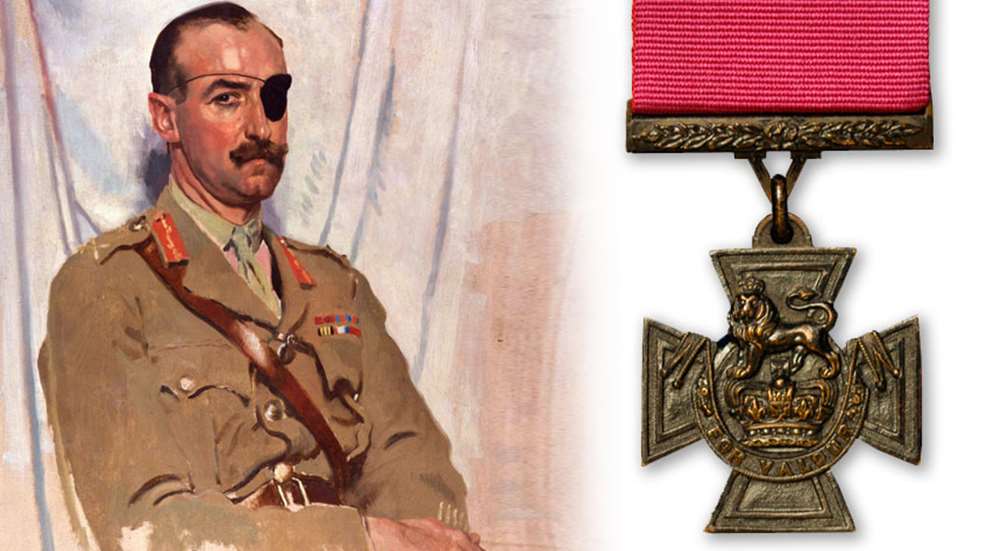
The United Kingdom’s highest award for gallantry in combat is the Victoria Cross, and Adrian Carton de Wiart is one of the impressive recipients of this award.
It was a tumultuous time for an 18-year old girl. The inflexible laws that governed royal succession had just made Alexandrina Victoria of the House of Hanover the queen of the British Empire. It was the year 1837, a time when the British were expanding their influence on all of the major continents. The troubled teenager had to deal with a host of politicians who bullied her ceaselessly on those matters of state where she had decisive power. Victoria had a strong will and the moral courage to do what she felt was proper and in the interests of her people. When she died in 1901, Victoria was much revered by her subjects. Her tough, single-minded devotion to honesty and morality strongly influenced the expansion of the British Empire. Beyond the first few years of her reign, when the stress was so strong, Victoria carried on. Married to Prince Albert in 1840, she delivered a total of nine children over a 21-year marriage. The Queen was exceptionally fond of her husband and family and became despondent at his death in 1861. After a long mourning, she emerged as a devoted public servant. Victoria wore black for the rest of her life.
The red-coated soldiers who fought to maintain and extend the British Empire in the 19th century affectionately called Victoria “The Widow.” For the last half of the 19th century, those soldiers were almost continually involved in one kind of expedition or small war after another. The military service to the queen was carried out with the same qualities the queen herself displayed. After all, this was a kingdom that gave ships of the Royal Navy names like HMS Inflexible, Indomitable, Intrepid, Invincible and Implacable, not to mention Defiance and Resolute. The tradition of courageous service under the most-difficult circumstances imaginable became the hallmark of the British fighting man. So much so that when they created a medal for heroic action in her majesty’s service, they naturally named it after her: the Victoria Cross.
Since its introduction in 1857, the Victoria Cross has been awarded to 1,350-odd soldiers, sailors and airmen. In the early days, a few went to civilians, but that doesn’t happen anymore. History tells us that three Brits were awarded a second VC for another battle. Also, there have been a few close-quarters battles in which British warriors have distinguished themselves to a degree that several of them were awarded the decoration. This happened in the Indian Mutiny, as well as in the defense of Rorke’s Drift in 1879. This latter fight was immortalized in a spectacular motion picture, “Zulu.” Among other distinctions, the concluding battle scene is considered to be one of the best ever put on film. A total of 11 VCs were awarded for this action, most of them to members of the 24th Regiment of Foot (light infantry).
When you go to the history books to find out more about the men who received the highest honor the United Kingdom can bestow, you find yourself reading the military history of the empire. The first were awarded for action in the Crimean war with Russia. The most-recent ones recognized distinguished service in Afghanistan. For the century and a half it has been in existence, the award also called the Widow’s Cross has graced the left breast of the tunic of some incredible warriors. But one of them stands out as having performed in a heroic manner before and after—as well as during—the action for which he was recognized. Born in 1880, he was a near-indescribable character of Belgian birth who became a naturalized citizen of Great Britain in 1907. His name was Adrian Carton de Wiart.
The young Adrian Carton de Wiart came from an aristocratic family of some means and was in a good private school. He left it and joined the British forces in time for the Second Boer War in 1899. Wounded in action (stomach and groin), he was invalided home to face the wrath of an angry parent. Allowed to stay in the Army, de Wiart was commissioned and even made it back to South Africa. Eventually, he was sent to India for service in the pre-Great War army. He became something of a character, known for intense physical activity and foul language. When the war began, de Wiart was on his way to the Somaliland, where in 1915 he was shot in the face and lost his left eye and a piece of an ear. After he recovered, he was sent to France and the command of troops on the western front. Always leading from the front, he was shot seven different times. On one occasion, his left hand was badly shot up and his fingers dangled loosely. When the surgeon refused to amputate, Adrian Carton de Wiart simply tore the fingers loose and discarded them. His devotion and skill as a soldier did not go unnoticed and he rose rapidly in rank.
In a 1916 action at La Boiselle, France, de Wiart was commanding a battalion that was attacking a German position. Several other battalions were involved in the action and he ended up as the de facto commander of all of them. This required him to move about a hotly-contested battlefield, with a lot of exposure to German fire. His example was an inspiration to his troops and is credited as the major cause the Brits won the day. For this, he received the treasured Victoria cross, which he didn’t even mention in his autobiography. When the war ended, Adrian Carton de Wiart served on a military mission to Poland, which was involved in wars with several nations. He formally retired in 1920.
After spending the inter-war years in Poland, he came back on duty when World War II began in 1939. As a military adviser and troop commander, he served in Poland, Norway, Yugoslavia, Italy and China. While traveling from Yugoslavia to Egypt, he survived a plane crash and imprisonment by the Italians. In a senior officer’s prison camp, the 61-year-old made five different escape attempts, including two tunneling operations. Later as a general officer, Adrian Carton de Wiart served his government in Southeast Asia, Burma and China.
Obviously, this active and devoted man, born at the time when Victoria Regina was shaping the history of the British Empire, was a worthy recipient of the Widow’s Cross. More warrior than diplomat, he nonetheless took diplomatic action whenever he could. Still, there’s a story about Adrian Carton de Wiart as an observer in Poland in 1920. Under attack on his train by Russian cavalry, he fought them off at close range with a revolver—fightin’ iron.




































